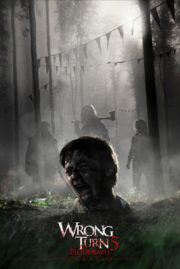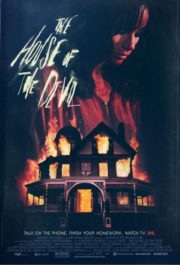Connecting with Evil: A Journey into “The Devil Inside”
In the chilling opening frames of “The Devil Inside”, a voice eerily warns, “No soul is safe.” This 2012 horror flick, directed by William Brent Bell, conjures a descent into possession and exorcism’s dark arts. It follows Isabella Rossi (Fernanda Andrade) as she delves into the harrowing truth behind her mother’s murderous actions, leading her to the heart of the Vatican’s most secretive practices. But does this film lurk in the hollows of the innovative, or does it tread on beaten, demonic paths?
Ambience of Dread: Crafting the Shadows
Horror thrives in the embrace of atmosphere and tone, and “The Devil Inside” leans heavily on suspense and a foreboding aura. Bell aims to construct tension by framing the story through a documentary-style lens, purportedly heightening realism and drawing the audience closer to its dark heart. Long, still shots and sudden, jarring movements immerse viewers in an unpredictable world where peace is ever elusive.
The choice of a dim, washed-out color palette adds a desolate chill to the experience, though one might argue this approach is growing stale in modern horror. Utilizing hand-held camerawork, quick zooms, and often chaotic framing, the film attempts to simulate the disorientation of confronting pure evil. Despite these efforts, the cinematography occasionally trips into the realm of the cliché, missing opportunities for truly original visual storytelling.
Frightful Sounds: The Scream and the Silence
Sound is the invisible specter in horror, and “The Devil Inside” knows when to whisper and when to scream. The soundtrack presents a minimalistic, yet unnerving collection of tunes that teeter between the sacred and the profane. Clever sound design capitalizes on quiet moments, using the absence of noise to amplify the sudden outbursts of terror. This tantalizing dance between the silent build-up and the explosive follow-through is one of the film’s more successful tactics in unsettling its audience.
From Script to Scream: Casting Terror
With its mockumentary approach, the film relies on performances that must straddle the line between authentic and theatrical. Andrade delivers a performance teeming with desperation and confusion, fitting the profile of a daughter in search of truth. Supporting actors Simon Quarterman and Evan Helmuth, as the young exorcists, grapple with the indistinct line between faith and science, though at times their portrayals drift into the melodramatic, possibly due to the script’s limitations.
The characterization often bends under the weight of horror tropes. Emotions and reactions might appear genuine, but are anchored in a narrative that offers little in the way of innovative character development. This results in a muddled connection with the audience, who yearn to root for the characters but find little stable ground in their arcs.
A Familiar Demon: The Mechanics of Fear
“The Devil Inside” presents a confluence of psychological tension and supernatural phenomena, mainstays of the possession subgenre. The film falls back on the methodology of many exorcism-centric stories, evoking memories of its cinematic ancestors without truly challenging their established conventions. It does, however, sprinkle in contemporary commentary on the skepticism surrounding the Catholic Church’s stance on exorcism, albeit superficially.
The tactics to instill dread involve a mix of psychological manipulation and visceral shocks. However, over-reliance on jump scares tends to discount the film’s efforts in the psyche, and the inclusion of body-contorting possession scenes echo greater executions we’ve seen in genre classics. Regarding the film’s deeper themes, one could argue it skims the surface of issues like faith, mental illness, and institutional secrecy, but these potentially rich veins are mostly left unmined.
Terror’s Audience: Who Should Venture Inside?
For those with an inclination for exorcism narratives, “The Devil Inside” offers a familiar journey with a few jolts and unsettling images. Casual viewers may find the film a digestible, if not groundbreaking, addition to their horror exploration. Yet, the film is likely to leave connoisseurs of the genre pining for the more cerebral or innovative contributions it only brushes against.
Comparatively, it lacks the unrelenting grip of “The Exorcist” or the raw, character-driven horror of “The Last Exorcism.” Nonetheless, it sits alongside entries like “Paranormal Activity” by tapping into the found-footage style that became a genre staple in the late 2000s.
The Final Verdict: Possessed Potential, Lackluster Soul
“The Devil Inside” reaches for the spine-tingling heights of its horror movie brethren but grasps vaguely at the coat-tails of true terror. It strums the surface of a haunting tune but falls short of crafting a lasting melody. Whereas the film is not devoid of fright or skill, its lack of depth and novel flair mark its place as an average, if occasionally chilling, genre piece. With moments of tension overshadowed by predictability, it is a spectacle suited to a forgiving, less discerning audience.
Do heed a warning: the film doesn’t shy away from graphic content and intense themes. It serves to disturb and shock, and in this, it does not falter. For those undeterred by this and the aforementioned criticisms, “The Devil Inside” may yet hold secrets worth the thrill of unearthing.




